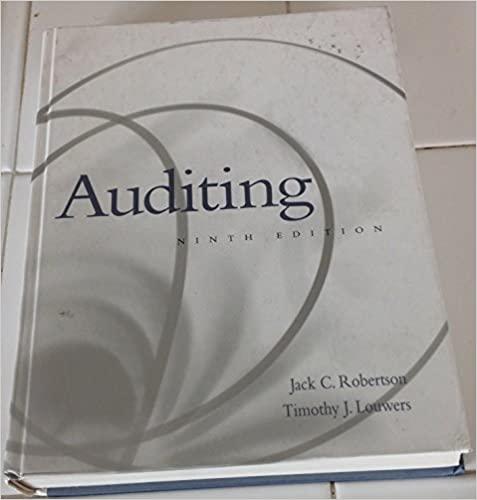Answered step by step
Verified Expert Solution
Question
1 Approved Answer
Computation of Trend Percentages: For calculation of the trend of data shown in the financial statements, it is necessary to have statements for a number

Computation of Trend Percentages: For calculation of the trend of data shown in the financial statements, it is necessary to have statements for a number of years, and then proceed as under: (1) Take one of the statements as the base with reference to which all other statements are to be studied. In selection of the best statement, it should be noted that it belongs to a 'normal' year of business activities. Statement relating to an abnormal year should not be selected as base, otherwise the trend calculated will be meaningless. (2) Every item in the base statement is stated as 100. (3) Trend percentage of each item in other statement is calculated with reference to same item in the base statement by using the following formula: Absolute Value of item (say cash) in other statements x 100 Absolute Value of same item (cash) in base statement Limitations of Trend Ratios: It should be noted that trend ratios are not calculated for all items. They are calculated only for logically connected items enabling meaningful analysis. For example, trend ratios of sales become more revealing when compared with the trend ratios of fixed assets, cost of goods sold and operating expenses. Trend ratios have the following limitations: (a) If the accounting practices have not been consistently followed year after year, these ratios become incomparable and thus misleading. (b) Trend ratios do not take into consideration the price level charges. An increasing trend in sales might not be the result of larger sales volume, but may be because of increased sales price due to inflation. In order to avoid this limitation, figures of the current year should be first adjusted for price level changes from the base year and then the trend ratios be calculated. (c) Trend ratios must be always read with absolute data on which they are based, otherwise the conclusions drawn may be misleading. It may be that a 100% change in trend ratio may represent an absolute change of 1,000 only in one item, while a 20% change in another item may mean an absolute change of 1,00,000. (d) The trend ratios have to be interpreted in the light of certain non-financial factors like economic conditions, government policies, management policies etc. 141 Illustration 1 From the following information extracted from the Balance Sheets of Star Ltd. for four previous financial years, calculate the trend percentages taking 2010-11 as the base year: 2010-11 2011-12 2012-13 2013-14 in lakhs) Current Assets: Cash Bank 400 200 260 240 300 220 240 200 400 800 600 1,200 1,000 1,800 1,600 2.000 Debtors Stock Non-Current Assets: Building Plant and Machinery 1,000 2.000 4.660 1,200 2.400 1,200 2.400 7.000 1,200 2.800 8,060 5.940
Step by Step Solution
There are 3 Steps involved in it
Step: 1

Get Instant Access to Expert-Tailored Solutions
See step-by-step solutions with expert insights and AI powered tools for academic success
Step: 2

Step: 3

Ace Your Homework with AI
Get the answers you need in no time with our AI-driven, step-by-step assistance
Get Started


